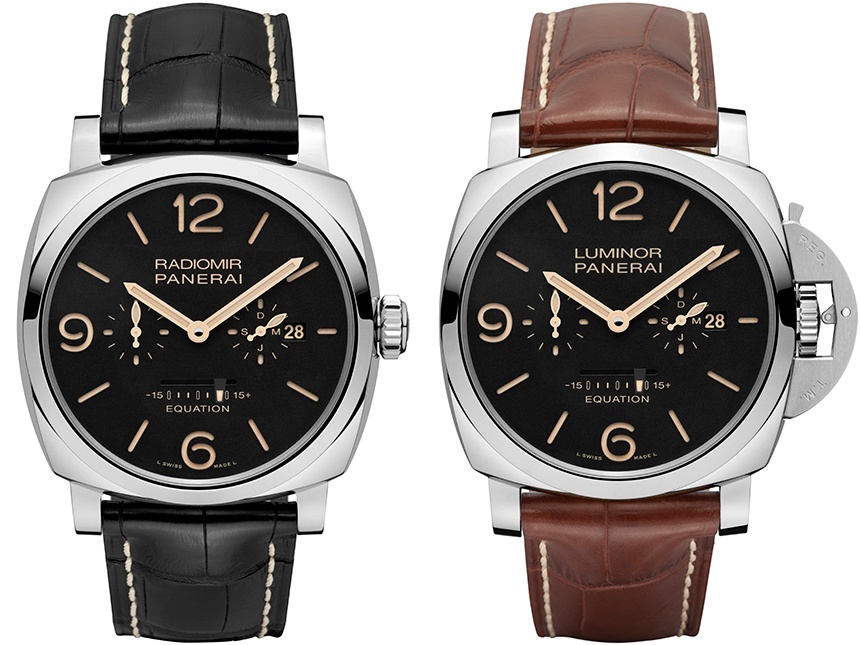
Every year, Paneristis wait with bated breath when SIHH comes around to see what new special edition watches Panerai will release. Last year’s standout special edition pieces were arguably the series of Radiomir 1940 chronographs (hands-on here) rendered in various precious metals, featuring a handwound movement based on the venerable Minerva caliber 13-22; also, the Radiomir 1940 3 Days Marina Militare Acciaio, which is a homage to the vintage Reference 6152 from the 1940s.
This year, the standout pieces thus far are the Panerai Radiomir 1940 Equation of Time 8 Days Acciaio and the Panerai Luminor 1950 Equation of Time 8 Days Acciaio. The equation of time complication is rarely seen on Panerai watches, and I believe the last Panerai watch to feature it was the Panerai L’Astronomo or PAM 365 from 2010. For those unfamiliar with this complication, it shows the difference between “true” or “apparent” solar time and “mean” solar time. This is because the length of a day is only exactly 24 hours on four days of the year, the rest of the time it varies between plus and minus 16 and 14 minutes, respectively. “Acciaio” is, of course, steel in Italian, and both watches will be offered with stainless steel cases. Apart from their case design, both watches are identical in terms of movement and dial layout, so let’s first dive into the movement powering these watches.
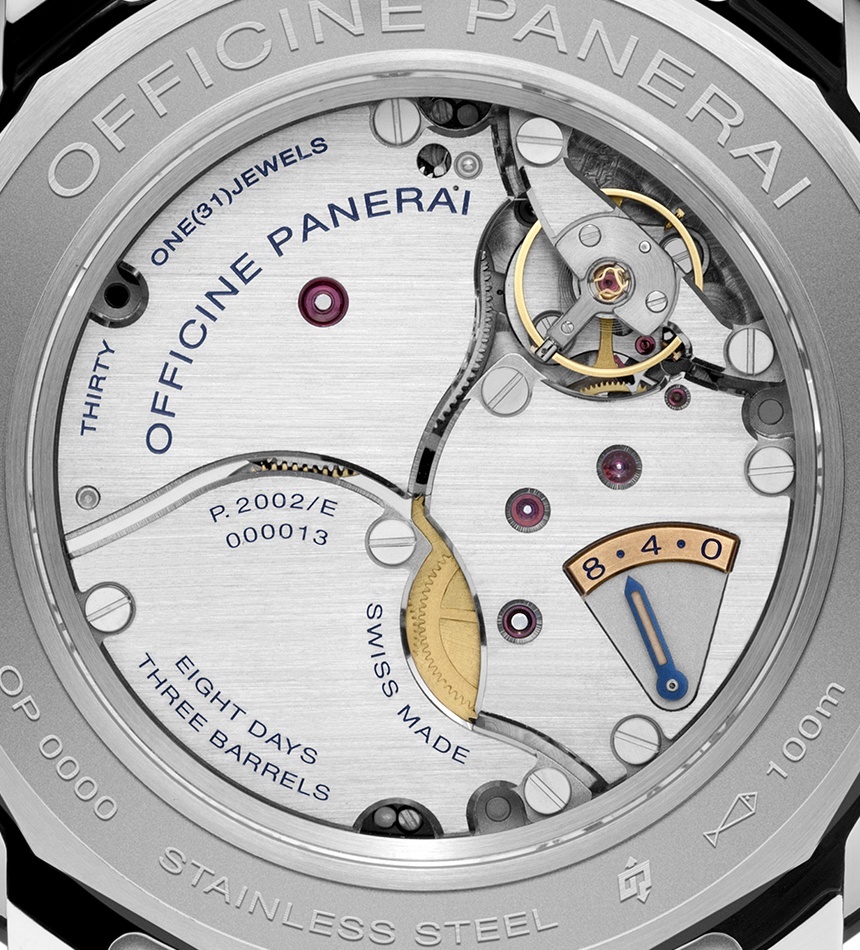
The movement underneath the Panerai Radiomir 1940 Equation of Time 8 Days Acciaio and the Panerai Luminor 1950 Equation of Time 8 Days Acciaio is the new P.2002/E, which in turn is based on the P.2002 – Panerai’s first in-house manufactured movement. Like all in-house manufactured Panerai movements, the P.2002/E movement is large and measures 13¾ lignes (roughly 31mm) wide and 8.3mm thick. It is made up of 328 parts, beats at 28,000bph, and thanks to its three spring barrels, has a power reserve of 192 hours, or 8 days.
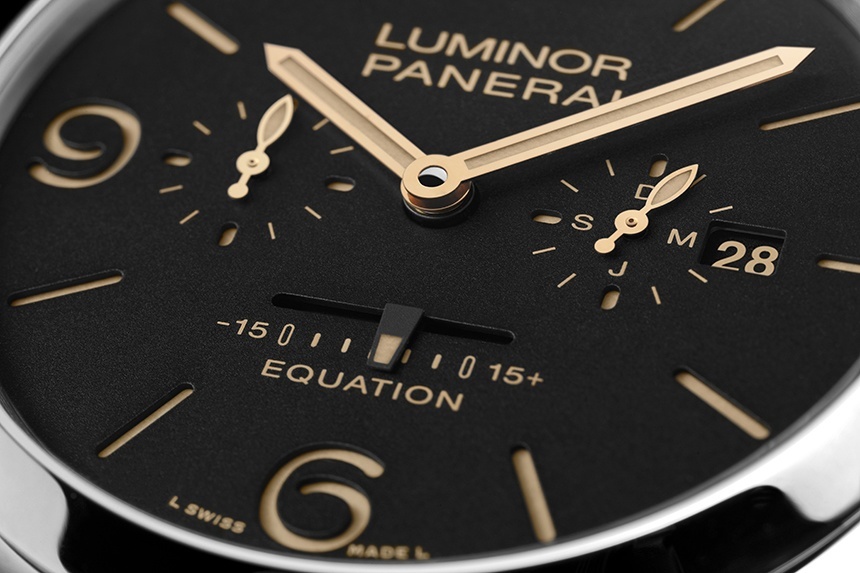
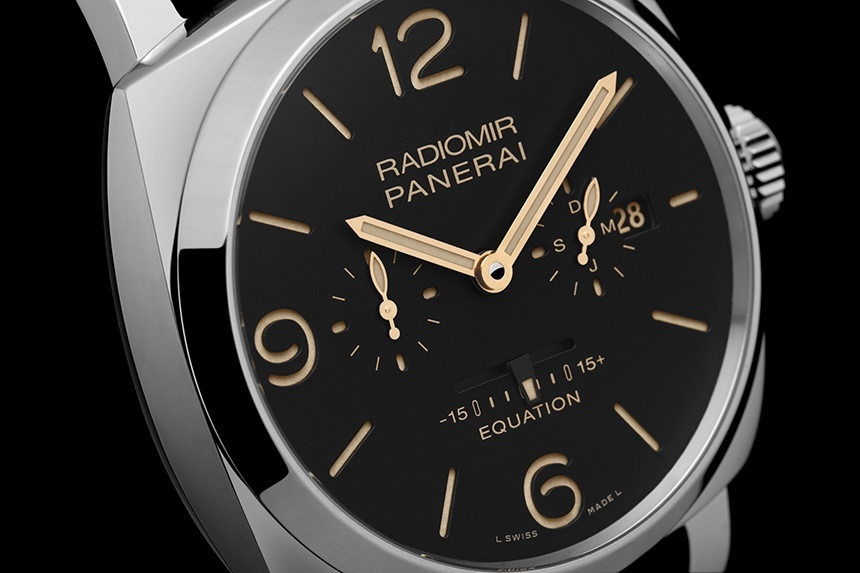
Both watches have Panerai’s signature sandwich-style dial, gold hands, and ecru lume, giving it a warm and vintage look, not unlike the Luminor 1950 3 Days. At nine o’clock, you have the running seconds with a reset function, and at three o’clock, you have the date window and a circular indicator for the months. The equation of time indicator is displayed using a linear indicator at six o’clock. A power reserve indicator is located on the back of the movement and can be viewed through the watch’s sapphire display case back.
Admittedly, it is a little busy looking, but Panerai has done a good job of fitting all the complications on the dial. The circular indication of the months is particularly clever, but a part of it is cut off because of the date window. Also, since its unusual for months to be displayed in this fashion, reading it will take some getting used to. If you think that regular Panerais have dials that are too plain-looking, this one is for you.
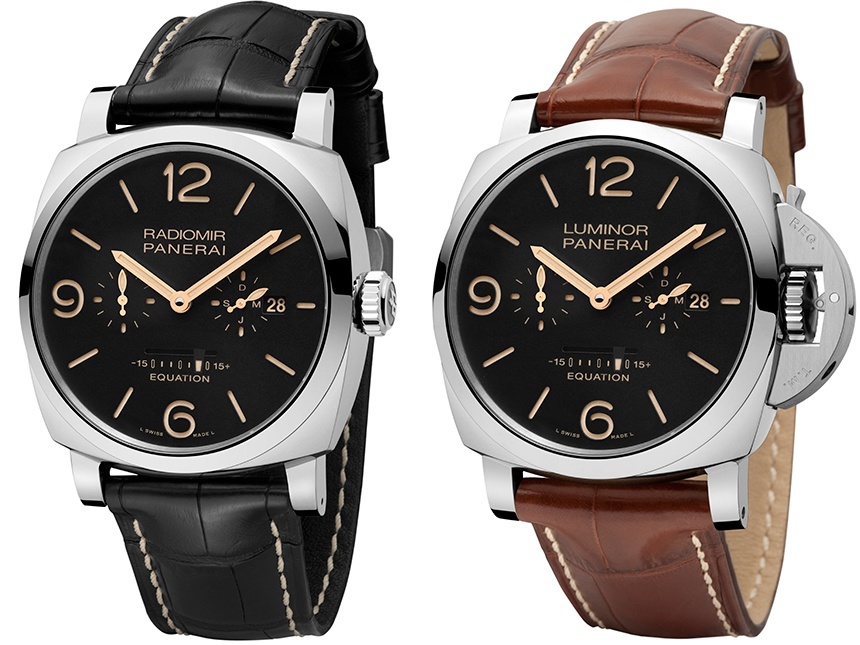
Elsewhere, the Panerai Radiomir 1940 Equation of Time 8 Days Acciaio comes in a 48mm polished case with polished bezel. And because it is done in the 1940s style, it does not have the wire lugs of the regular Radiomir models. It has a screw down crown and a rated water resistance of 100m. It also comes with a black alligator strap with ecru stitching and will be limited to just 200 pieces.
The Panerai Luminar 1950 Equation of Time 3 Days Acciaio comes in the company’s familiar 47mm 1950-style Luminor case with a polished case and bezel. The distinctive “device protecting the crown” is, however, given a brushed finish. Water resistance is rated at 100m, and it will be offered with an antique brown alligator strap with ecru stitching. This model is limited to just 100 pieces. The new Panerai Equation of Time pieces will be priced in the $20,000 – $23,000
range. panerai.com
